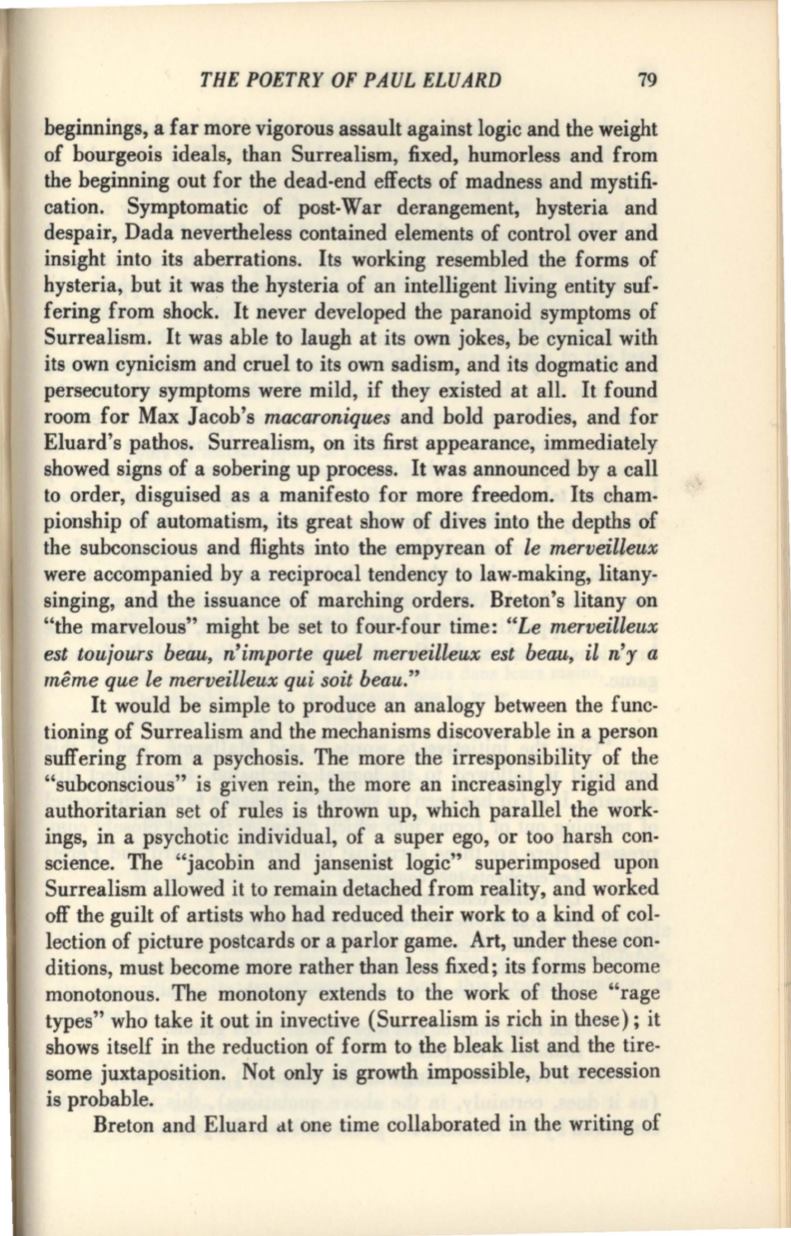
THE POETRY OF PAUL ELUARD
79
beginnings, a far more vigorous assault against logic and the weight
of bourgeois ideals, than Surrealism, fixed, humorless and from
the beginning out for the dead-end effects of madness and mystifi–
cation. Symptomatic of post-War derangement, hysteria and
despair, Dada nevertheless contained elements of control over and
insight into its aberrations. Its working resembled the forms of
hysteria, hut it was the hysteria of an intelligent living entity suf.
fering from shock. It never developed the paranoid symptoms of
Surrealism. It was able to laugh at its own jokes, he cynical with
its own cynicism and cruel to its own sadism, and its dogmatic and
persecutory symptoms were mild, if they existed at all. It found
room for Max Jacob's
macaroniques
and hold parodies, and for
Eluard's pathos. Surrealism, on its first appearance, immediately
showed signs of a sobering up process. It was announced by a call
to order, disguised as a manifesto for more freedom. Its cham–
pionship of automatism, its great show of dives into the depths of
the subconscious and flights into the empyrean of
le merveilleux
were accompanied by a reciprocal tendency to law-making, litany–
singing, and the issuance of marching orders. Breton's litany on
"the marvelous" might he set to four-four time:
"Le merveilleux
est toujours beau, n'importe quel merveilleux est beau,
il
n'y a
meme que le merveilleux qui soit beau."
It would he simple to produce an analogy between the func–
tioning of Surrealism and the mechanisms discoverable in a person
suffering from a psychosis. The more the irresponsibility of the
"subconscious" is given rein, the more an increasingly rigid and
authoritarian set of rules is thrown up, which parallel .the work–
ings, in a psychotic individual, of a super ego, or too harsh con–
science. The "jacohin and jansenist logic" superimposed upon
Surrealism allowed it to remain detached from reality, and worked
off the guilt of artists who had reduced their work to a kind of col–
lection of picture postcards or a parlor game. Art, under these con–
ditions, must become more rather than less fixed; its forms become
monotonous. The monotony extends to the work of those "rage
types" who take it out in invective (Surrealism is rich in these); it
shows itself in the reduction of form to the bleak list and the tire–
some juxtaposition. Not only is growth impossible, hut recession
is probable.
Breton and Eluard ut one time collaborated in the writing of


